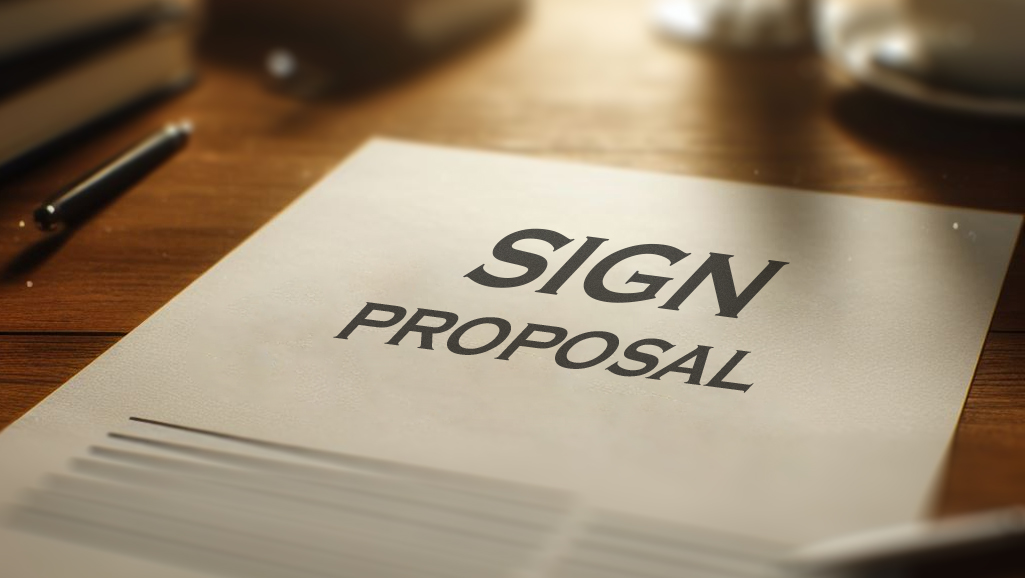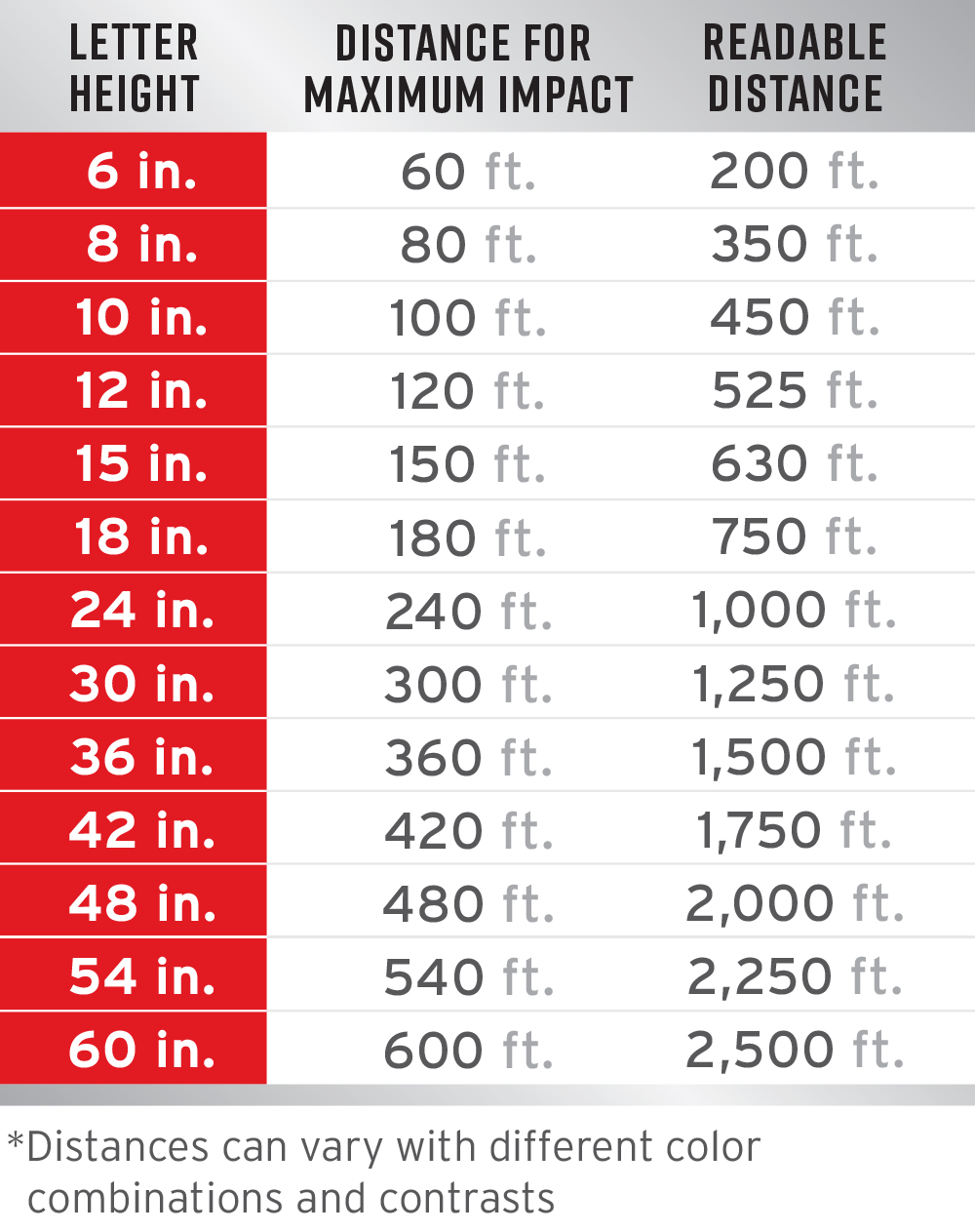November 22, 2024
How to Use Facts & Statistics In Signage Proposals: 7 Tips

Picture this: you’re presenting a signage proposal to a client, brimming with vibrant colors, a captivating design, and promises of enhanced brand visibility. But as impressive as it looks, does it have the backing to inspire total confidence? Perhaps what you need are some facts and statistics.
By weaving data and concrete insights into your signage design proposals, you can offer clients not just a concept but the proof they need to feel secure in their investment. With well-researched stats on customer reach, optimal visibility, and proven materials, you can equip clients with a data-driven vision that’s hard to turn down.
Here are seven tips to bring your proposals to life and back them with evidence.
Tip 1: Research for a Tailored Signage Proposal
Before you shape your pitch, make sure to do your due diligence. To create a proposal that stands out, start by gathering the necessary information about your client’s business and location. This includes understanding the client’s industry, identifying local zoning regulations, and checking any leasing parameters that could influence sign design or placement. Conduct a site survey whenever possible to assess factors like visibility, local foot traffic, and property specifications. If an on-site visit isn’t feasible, request documents like an ALTA survey or leasing details from the client. Incorporating these insights helps create a proposal that addresses both the client’s needs and local compliance standards, ensuring a tailored, accurate approach.
Related Article: How to Ask Your Client the Right Questions
Tip 2: Utilize Specific Dimensions 
Providing exact dimensions for signage in your design proposal shows clients that you have a clear vision. Including precise measurements along with images of the sign location helps avoid confusion and ensures all parties are aligned on the proposed sign size and how it will appear in the chosen space.
Additionally, providing context on how the size of the sign letters impacts readability for potential traffic at different distances is crucial. Understanding that larger letters increase the likelihood of being read from a greater distance helps customers comprehend the benefits.
Tip 3: Strategic Color Choices
Color plays a colossal role in signage effectiveness. Recommend specific colors and include color codes in your proposal to guide the client on the visual appeal and brand alignment. Consider how each color may affect perception as well as readability — for instance, bright whites can increase visibility and convey a sense of professionalism.
You also will want to consider accessibility and the combinations of certain colors which can cause issues with people who are color blind. For example, reds and greens, which are the more common forms of color blindness, can be difficult to distinguish between. Keeping that in mind, choose complimentary colors that can provide higher contrast with those colors, like whites and blacks, that can help with the visibility.
Tip 4: Detailed Quantities and Coverage
When customers start a business, they often need more than a single sign. Providing a turnkey signage solution means documenting every detail of each product, including size, specific colors (paint, trim cap, vinyl, digital print, etc.), quantities, installation location, type of installation, electrical needs, and more. For instance, if a customer orders channel letters on a raceway for the outside of a building, along with a small interior plug-style front trimless logo box and 2 tenant panels for double-sided the monument sign, keep all elements for each sign type separate. This ensures every detail is accounted for, making planning smoother for both the client and your team.
Tip 5: Showcasing Experience and Expertise
Demonstrating your company’s experience and achievements through real numbers and data can significantly boost client confidence. By showcasing a proven track record of successful signage projects, you assure potential clients that your team possesses the professionalism and expertise needed to meet their needs effectively. Additionally, consider highlighting any industry certifications or awards your company has received, and provide detailed case studies that illustrate your problem-solving abilities and innovative approaches. Offering client testimonials and visual examples of your work can also reinforce your credibility and reliability.
Tip 6: Certifications and Quality Assurance
Listing relevant certifications, licensing, and standards demonstrates your commitment to quality and compliance. Whether it’s the Better Business Bureau (BBB), UL listing, ISA, ASA, or location sign associations or other industry-recognized certifications such as ADA Compliance, NEC Certification, showcasing these in your proposal can help clients feel assured about product reliability and safety. Additionally, mentioning any rigorous testing procedures and quality control measures your products undergo can provide added assurance. Regularly updating and renewing certifications, and prominently displaying them in your communications, underscores your ongoing dedication to excellence and adherence to industry standards.
Related Article: Installation talking Points to Nail the Sale
Tip 7: Signage Impact
Using facts and statistics to demonstrate potential outcomes can make a proposal much more persuasive. For example, statistics on increased foot traffic or brand visibility from previous projects can help clients see the real-world impact of investing in quality signage. Additionally, showcasing case studies or testimonials from satisfied customers can provide concrete examples of success. Visuals, such as before-and-after photos or graphs showing improved metrics, can further illustrate the benefits. Highlighting specific ROI (Return on Investment) figures can also underline the financial advantages. Emphasizing how well-designed signage can enhance customer experience, improve brand recognition, and drive sales can make your case even stronger.
Examples of Using Facts and Stats
In signage proposals, swapping vague statements for precise facts and specific numbers will level up proposal clarity and client confidence.
For instance, rather than saying, “Our signs will be a great complement to the face of the building,” specify, “These 38” by 24” channel letters are designed to perfectly fit on your 48’ by 15’ building façade.” Or, instead of “these red letter faces will stand out well on the blue building façade,” try, “Our recommended acrylic face color, #2283 Red, provides ideal contrast against the medium blue façade, as shown in the illustration below.”
This approach is equally effective for quantities: replace “strong signage presence” with “a set of 28 individual letters spanning a total coverage area of 72.8 square feet.” Tailored details like these demonstrate your understanding of the industry and give clients a clearer vision of the proposed signage’s impact.
Elevating Your Signage Proposals with Facts and Statistics
Creating a powerful signage proposal goes beyond great design — it’s about building a foundation of trust through data and thoughtful preparation. By doing the research to understand your client’s business, local regulations, and physical setting, you’re showing that their needs are your priority. Adding specific details on dimensions, color choices, and signage quantities, along with showcasing your own experience and quality assurances, gives your proposal substance and depth. Most importantly, when you show the real-world impact of your work with facts and statistics, you’re giving clients a tangible reason to get on board.
The result? A proposal that does more than sell — it connects, informs, and demonstrates why you’re the right choice. So, as you prepare your next pitch, consider these signage proposal tips to make it truly compelling. For support with every stage of your signage journey, reach out to Direct Sign Wholesale. We’re here to help bring your — and your client’s — vision to life.
